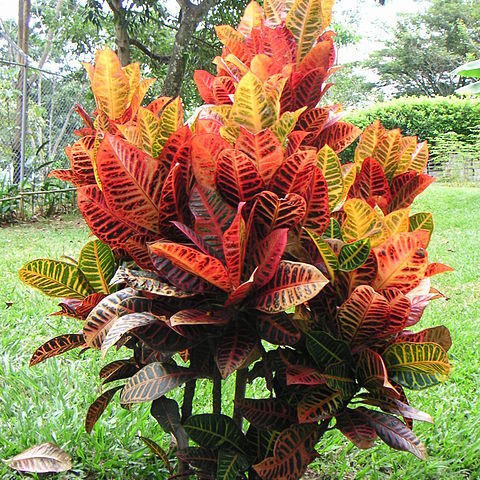Shrubs or trees, evergreen, perennial, monoecious; stems and foliage with clear to brownish latex. Indumentum of simple, multicellular trichomes, glandular trichomes absent, stinging trichomes absent. Stipules entire, inconspicuous, deciduous. Leaves alternate, petiolate to sessile, elobate, penninerved, entire, glands absent. Inflorescences terminal or axillary, racemose, solitary, usually unisexual, with flowers in bracteate glomerules. Male flowers pedicellate; calyx lobes 3–6, imbricate, free and ± equal; petals 2–6, imbricate, free; disc comprising small glands; stamens 15–100, filaments free and attached to a slightly raised receptacle; anthers basifixed, bilobate, thecae oblong and longitudinally dehiscent; pistillodes absent. Female flowers pedicellate; calyx lobes 3–6, imbricate, free and ± equal; petals absent; disc cupular; ovary 3-locular, ovules uniloculate; styles 3, shortly connate at base, entire or rarely bifid. Fruit capsular, trilobate, surface smooth, dehiscing septicidally into 3 bivalved cocci. Seeds ovoid; testa crustaceous; albumen fleshy; caruncle entire, non-arilloid; cotyledons broad, flat.
Shrubs or treelets, monoecious, rarely dioecious; indumentum when present simple; latex present, clear and nontoxic. Leaves alternate, petiolate; stipules minute, caducous, sometimes obsolete; leaf blade entire, rarely lobed; venation pinnate. Inflorescence axillary, long, unbranched, usually unisexual. Male flowers several per bract; calyx (3-)5(-6)-lobed, lobes imbricate; petals small, 5 or 6, rarely absent; disk divided into 5-15 free glands; stamens 15-100; rudimentary ovary absent. Female flowers 1 per bract; calyx 5-lobed; petals absent; disk subentire or divided; ovary 3-locular; ovules 1 per locule; styles 3, unlobed, rarely bifid. Fruit a capsule. Seeds carunculate; cotyledons broad and flat.
Male flowers: pedicels slender, jointed; sepals (3)5(6), closely imbricate; petals (3)5(6), small, minute or absent; disk glands 5–15, free, alternipetalous; stamens 15–100, filaments free, anthers erect, extrorse, dorsifixed, connective broad, thecae apically confluent, longitudinally dehiscent; pistillode absent.
Female flowers: pedicels shorter and stouter than in the male, not jointed; sepals smaller than in the male, otherwise ± similar; petals absent; disk shallowly cupular, subentire or shallowly 5-lobed; ovary 3-locular, 1 ovule per locule; styles 3, shortly connate at the base, spreading or recurved, usually simple.
Leaves alternate, petiolate, minutely stipulate or stipules absent, simple, entire or 3-lobed, occasionally the lamina contorted or interrupted along the midrib, penninerved, eglandular or ± so.
Inflorescences axillary or subterminal, racemose, solitary or paired, usually unisexual, pedunculate; male bracts 1–6-flowered; female bracts l-flowered.
Fruit globose or 3-lobed, dehiscing septicidally into 3 bivalved cocci; pericarp thin; endocarp thinly woody; columella persistent.
Seeds ovoid to subglobose, carunculate; testa smooth, shiny, marmorate, crustaceous; albumen fleshy; cotyledons broad, flat.
Monoecious or occasionally dioecious shrubs or small trees with a simple indumentum, or glabrous.

